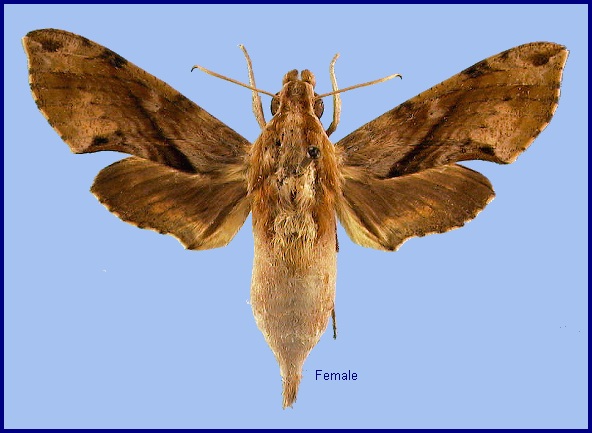
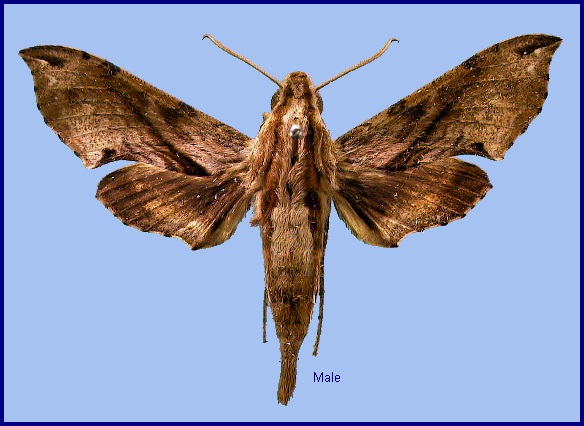
Panacra mydon Walker, 1856, List Specimens lepid. Insects Colln Br. Mus. 8: 155. Type locality: [Bangladesh,] Silhet [Sylhet].
Synonym. Panacra mydon Walker, 1856.
Synonym. Panacra scapularis Walker, 1856.
Synonym. Chaerocampa jasion Herrich-Schäffer, 1858.
Synonym. Choerocampa scapularis arachtus (Boisduval, 1875).
Synonym. Panacra mydon pallidior Mell, 1922.
Synonym. Panacra mydon septentrionalis Mell, 1922.
Synonym. Panacra argenteus Clark, 1928.
Wingspan: 53--62mm. Sexes dimorphic, the brown of the ground colour and darker markings of the female being somewhat more reddish. Forewing upperside shaded with brown in both sexes, the male not much paler than the female (unlike Eupanacra elegantulus); first postmedian line not quite straight, ending in a black costal spot just distal to apex of R; third and fourth postmedian lines dentate, accentuated by vein-dots, but vestigial between veins; a brown, triangular marginal area from M1 posteriorly, separating a pale, roughly triangular area from the distal margin; fringe of heavily marked with black. Wing margins somewhat scalloped. Forewing slightly excavate below apex. Forewing underside with submarginal line parallel to distal margin, curving costad anteriorly, dentate, accentuated by vein-dots; brown marginal band dilated around M2. Hindwing upperside with fringe of heavily marked with black. Hindwing underside with brown marginal band dilated around M2. Tegula with a pale gold apical fringe consisting of a few large, metallic scales. Middle of thorax and anterior abdominal tergites broadly greyish-clay. Abdomen upperside with a few racket-shaped white scales present laterally at the apices of tergites 3-6. Abdomen underside without a pair of distinct median black dots on segments 3-6.
In the male genitalia, uncus similar to Eupanacra regularis regularis but a little broader. Gnathos similar to Eupanacra regularis regularis. Valve with many stridulatory scales. Harpe slender, similar to Eupanacra automedon, not distinctly spatulate. Phallus apical process with right lobe projecting, as in Eupanacra regularis regularis, but broader apically and more heavily dentate, scarcely longer than broad; left lobe similar to Eupanacra malayana but broader.
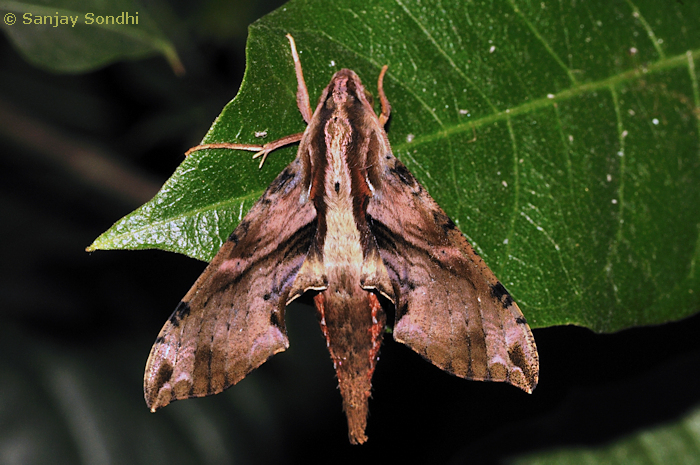
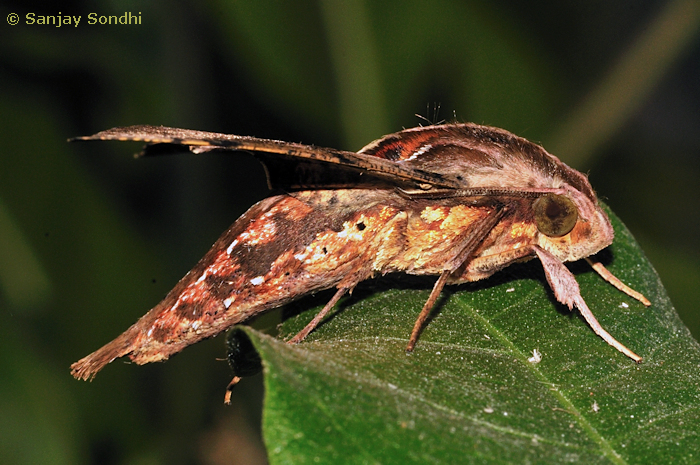
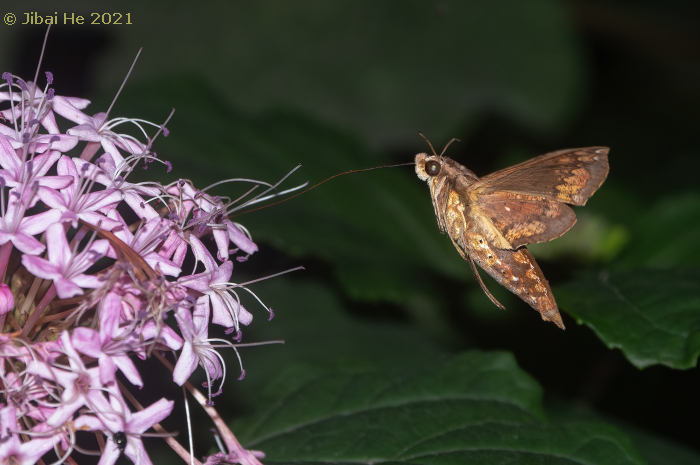
Attracted to the flowers of Duranta erecta and Ixora.
China: iii-ix (Hong Kong); vi (Sichuan); vi (Guangdong); 20.vii (Yunnan); 3.x (Tengchong).
Kendrick (2002) states that this common moth is multivoltine in Hong Kong, occurring from March until late July and again in late September, with peaks in March and May.
OVUM: Yellowish-green, the bright orange of the young larva showing through before hatching (Bell & Scott, 1937).
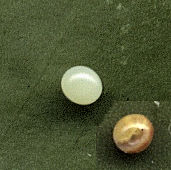
LARVA: Full-fed 95mm., width 8mm., horn 5mm. According to Bell & Scott (1937), in the first instar the body is long and thin; the horn straight, of medium length. Head and body orange, horn greyish-black. In the second instar, the body surface is smooth and shiny, with the head and body being translucent pale green, the horn black.
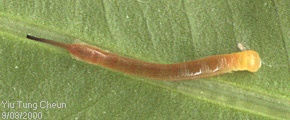
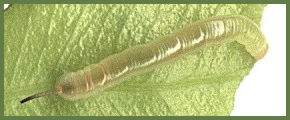
In the third and fourth instar the body stays long and thin, but segment six becomes tumid. The horn is now long and straight. The surface of the head and body is smooth and dull and pale yellowish-green in colour. There is an oval, longitudinal, black eye-spot on segment six. The horn is black above, but pale green laterally and centrally.
In the fifth instar the shape is as in others of the genus. The horn is thick at its base, tapering sharply to a blunt point; basal half at right angles to dorsum of larva, distal half bent sharply downwards. Body smooth and dull, excepting the eye-spot and the band above it, which are shiny as though enamelled, and the horn, which is shiny and covered with small tubercles.
In colour, head bright green, body pale yellowish-green. Segments 4 and 6 bright green on dorsum, marked with longitudinal white dashes. A dark green, narrow, dorsal stripe runs from segments 2 to 5, with a pinkish stripe on each side of it on 5. There is an oval, longitudinal eye-spot on segment 6. This is black above, reddish-brown below, the reddish-brown portion being outlined by a narrow pale band, the whole edged by a narrow blackish line. Above the eye-spot, and touching it, there is a broad white band with a bright red quadrate spot in the centre of it. A broad, brown subdorsal stripe starts from the front margin of 2, runs across 3 and 4, then below the eye-spot on 5, then turns up to the dorsum along the hind edge of 5, this stripe being edged below by a narrow pale stripe. A brown spiracular stripe runs from the spiracle on segment 6 to the hind margin of 11. This stripe narrows at the spiracles, but widens between them. Segment 13 and anal flap brown, with a broad, green, dorsal stripe from base of horn to tip of flap. Segments 6 to 12 are sometimes immaculate except for the spiracular band, or marked with irregular brown patches. When reared in the dark the brown colour may spread over the whole of these segments. Horn orange; true legs pink, prolegs green. Spiracles black edged broadly with white.
There is also a brown form in which all green colouration is replaced by brown. Some larvae may even be intermediate between the two forms.
When alarmed, the larva retracts the head and anterior segments into segment 5, and expands that segment to show the eye-spots, which are not visible in the resting position (Bell & Scott, 1937).
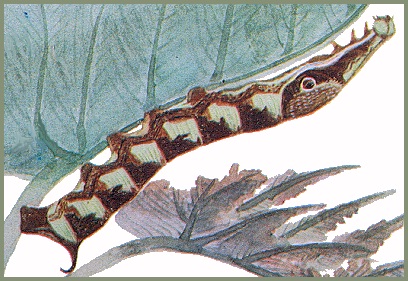
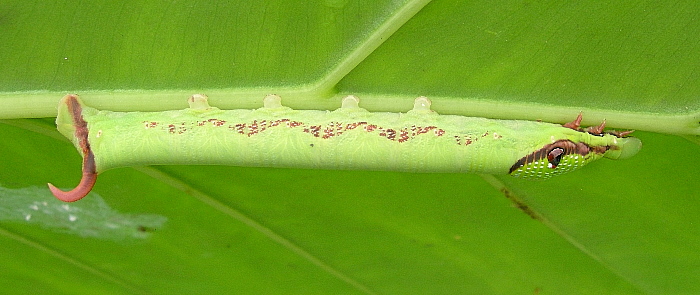
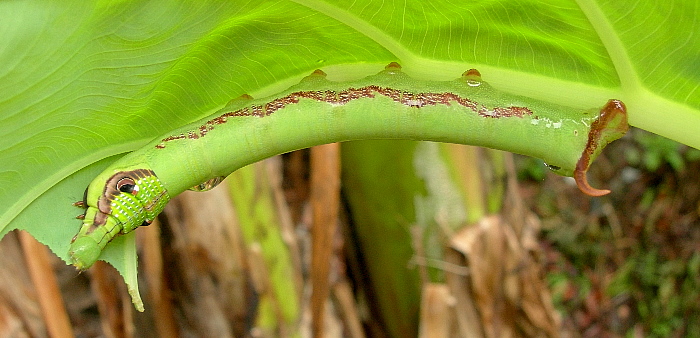

PUPA: 50mm., width 10mm. Very similar to that of Eupanacra busiris. Cremaster broadly triangular, dorsal surface rounded, ventral surface deeply, longitudinally concave, ending in a stout shaft which branches near base, each branch ending in two hooks. There are two shorter shafts, each with a single hook, on each side of base of central shaft (Bell & Scott, 1937).
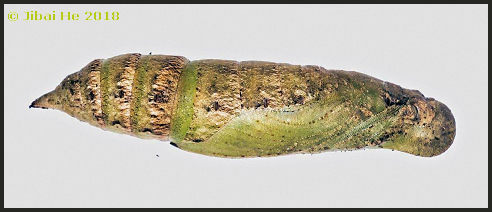

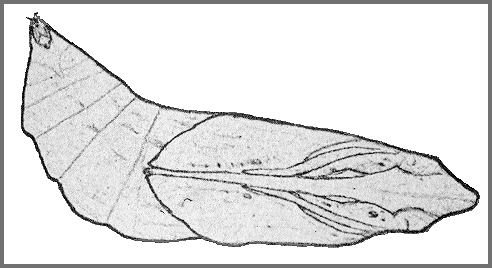

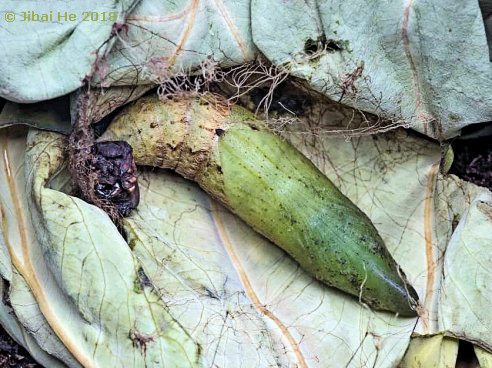
Larval hostplants. Alocasia odora (Araceae) in Hong Kong (Tennent, 1992) and Macau (Easton & Pun, 1996). Colocasia, Caladium, Arisaema and Amorphophallus (Araceae) elsewhere (Inoue, Kennett & Kitching, [1996] 1997).
In Laos and Thailand, recorded from Scindapsus pictus, Syngonium podophyllum and Syngonium vellozianum (Eitschberger & Ihle, 2008).
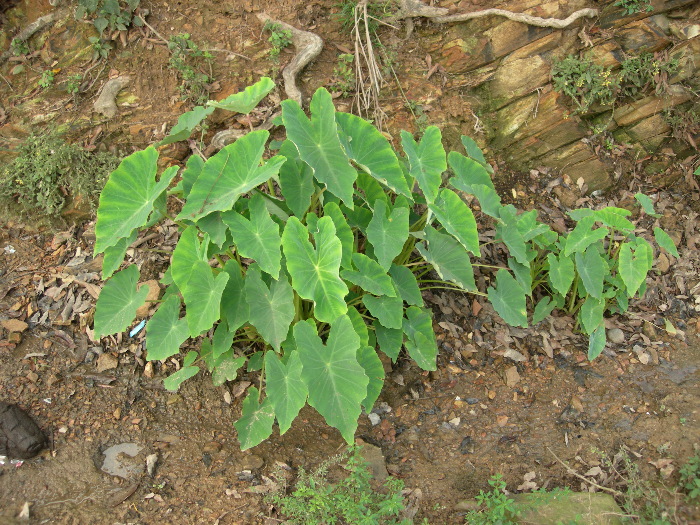
Unknown.
China: Anhui (Xidizhen; Shangpeng; Songchuan; Longtian); Zhejiang (Dayuantou; Lishui); Sichuan (Zhongjiang; Chengdu; Longmen; Luzhou); Chongqing (Chongqing); Yunnan (Cangyuan; Menglun; Tengchong, 1800m; Simao/Pu'er; Yingjiang); Jiangxi (Yichun; Wuyuan); Fujian (Ningde; Fuzhou); Guangdong (Guangzhou; E. Nan Ling; ??Wai-tzi-san; Shenzhen; Huizhou; Foshan; Yunyong Forest Park; Yunan County); Macau; Hong Kong (North Point; Shau Kei Wan); Guangxi (Miao Ling; Maoer Shan, 1800m; Nanning; Longgangcun); Hainan (Jianfeng; Wucha).
Nepal, Bhutan (Irungbam & Irungbam, 2019), northeastern India (Subhasish Arandhara, 2016 & 2017), Bangladesh, Burma/Myanmar, southern China, Thailand, Laos, Vietnam, Peninsular Malaysia.
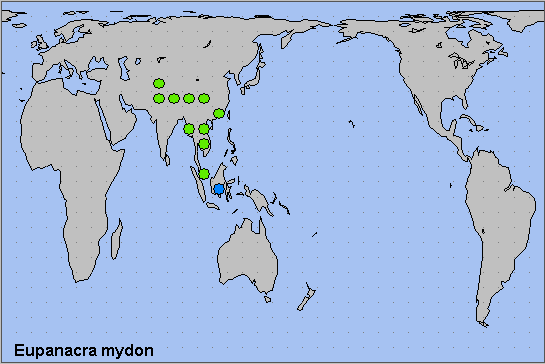
 Return to Sphingidae of the Eastern Palaearctic species list
Return to Sphingidae of the Eastern Palaearctic species list